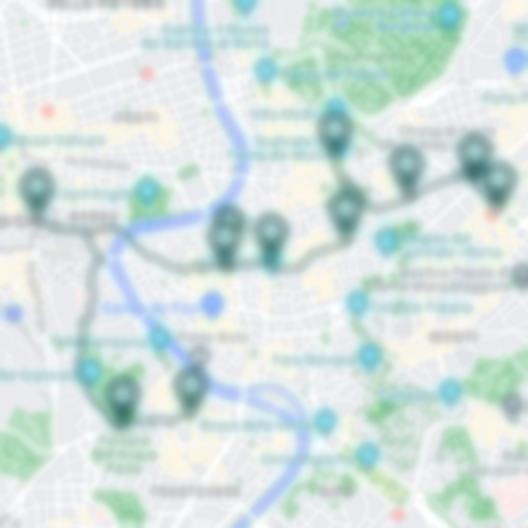Nestled in the heart of Italy, Vatican City might be the smallest country in the world, but it packs an enormous cultural and religious punch. The seat of the Roman Catholic Church and home to the Pope, this independent city-state is surrounded by Rome and is a place of pilgrimage for Catholics from across the globe. Whether you’re drawn in by the spiritual significance, the art, or the history, you’ll find that Vatican City holds mysteries and marvels at every turn. For those planning to visit or just curious about this unique place, here are some frequently asked questions that will shed light on the Vatican City.
Exploring the Heart of Catholicism: A Journey to Saint Peter’s Basilica
Before delving into the specifics of Vatican City, one cannot overstate the importance of visiting Saint Peter’s Basilica. This architectural marvel is not just the spiritual heart of the Vatican but also a masterpiece that has inspired artists and architects worldwide. To make the most out of your visit, consider checking out this comprehensive guide on exploring Saint Peter’s Basilica, which covers everything from its magnificent art to the awe-inspiring architecture.
What exactly is Vatican City?
Vatican City, officially Vatican City State, is an independent city-state enclaved within Rome, Italy. It is the smallest sovereign state in the world by both area and population. The Vatican is the headquarters of the Roman Catholic Church and the temporal seat of the Pope, its spiritual leader.
How can one visit Vatican City?
Visiting Vatican City is simpler than you might think. The city-state is open to tourists and can be accessed from Rome without any border checks due to Italy and Vatican City’s unique agreements. However, to enter its museums and other attractions such as the Sistine Chapel, tickets are required. These can be purchased online in advance, which is highly recommended to avoid long queues.
When is the best time to visit?
The best time to visit Vatican City is during the shoulder seasons of spring (April to June) and autumn (September to October). The weather is pleasant, and while you’ll still encounter tourists, the crowds are less overwhelming compared to the peak summer months. Winter can also be a good time to visit if you don’t mind the cooler weather, as there are far fewer tourists.
What are the must-see attractions in Vatican City?
The Vatican Museums: Home to an immense collection amassed by the Popes over centuries, the Vatican Museums feature works from the Renaissance era alongside ancient Roman and Egyptian artifacts.
The Sistine Chapel: Famous for Michelangelo’s ceiling and The Last Judgment, the Sistine Chapel is a marvel of Renaissance art.
Saint Peter’s Basilica: As mentioned earlier, a visit to the basilica is a must. Don’t forget to climb up to the dome for breathtaking views of Vatican City and beyond.
The Vatican Gardens: Offering a green respite amid the religious and artistic splendor, the Vatican Gardens require a separate tour, which needs to be booked in advance.
Can anyone visit the Pope?
Public Papal Audiences are held every Wednesday if the Pope is in residence in Vatican City, giving visitors a remarkable opportunity to see the Pope and receive his blessing. Tickets for these audiences are free but must be requested in advance through the Prefecture of the Papal Household.
What are the peculiarities of Vatican City?
The Swiss Guard: The colorful and uniquely dressed Swiss Guard is responsible for the safety of the Pope and the protection of Vatican City. Their distinctive uniforms and dedication to their roles are a sight to behold.
Vatican Post Office: Known for its efficient service and unique Vatican postage stamps, the Vatican Post Office is a favorite among philatelists and those looking to send an unusual postcard.
Dining and accommodation in Vatican City
While Vatican City itself does not have hotels or traditional dining options available to the general public, the surrounding areas in Rome offer a wide range of accommodations and restaurants catering to all tastes and budgets. Remember, you’re just a short walk away from some of Rome’s premier dining spots!
Cultural considerations
When visiting Vatican City, it’s essential to be mindful of the dress code, especially when entering religious sites. Shoulders and knees should be covered, and hats removed. While the Vatican attracts tourists from all walks of life, a respectful demeanor within its sacred spaces is appreciated.
Navigating the Mysteries of Vatican City: Your Questions Answered
How many acres is Vatican City?
Vatican City spans approximately 110 acres, making it the smallest sovereign state in the world by both area and population.
How many people live in Vatican City?
The population of Vatican City is around 800 people, including clergy, members of the Swiss Guard, and other lay workers.
Is the Vatican a city or a country?
Vatican City is an independent city-state enclaved within Rome, Italy. It operates as a sovereign entity distinct from Italy and is the spiritual and administrative center of the Roman Catholic Church, making it a country.
Are tourists allowed in Vatican City?
Yes, tourists are allowed in Vatican City. Many attractions such as the Vatican Museums, the Sistine Chapel, and Saint Peter’s Basilica are open to visitors. Entry for certain attractions requires a purchased ticket, especially recommended to be bought in advance.
How old is Vatican City?
Vatican City was officially established as an independent state on February 11, 1929, following the signing of the Lateran Treaty between the Holy See and Italy. This makes it relatively young in its current legal form. However, the history of the Vatican area as the spiritual center of the Roman Catholic Church stretches back centuries.
Why is Vatican City famous for?
Vatican City is renowned for its spiritual significance to the Catholic Church, being the residence of the Pope, and housing pivotal religious sites such as Saint Peter’s Basilica and the Sistine Chapel. It is also famous for its remarkable collections of art, history, and culture amassed over centuries.
What is not allowed in the Vatican?
Within Vatican City, especially in religious sites, there is a strict dress code requiring knees and shoulders to be covered. Photography is restricted within the Sistine Chapel, and during Papal Audiences and Masses, respect and decorum must be maintained. Large bags and sharp objects are also not allowed inside the museums.
Does the Vatican have passports?
Yes, the Vatican issues passports. These are typically granted to citizens of Vatican City, such as Cardinals living in the city-state, the members of the Holy See’s diplomatic service, and those who reside in Vatican City due to their office or service.
Does Vatican City have a hotel?
Vatican City itself does not offer accommodations like hotels for tourists. Visitors can find lodging in Rome, which surrounds the Vatican and offers a range of hotels, hostels, and apartments to suit different budgets.
Does the Vatican have an army?
The closest entity to an army is the Swiss Guard, a small force responsible for the safety of the Pope and the Apostolic Palace. While their colorful Renaissance-inspired uniforms make them one of the most memorable sights in Vatican City, they are professionally trained and equipped modern soldiers.
In a nutshell, Vatican City isn’t just a destination; it’s an experience. It’s a place where art, history, and religion intermingle to tell stories that span millennia. Whether you’re standing under the vast dome of Saint Peter’s Basilica, marveling at the masterpieces in the Vatican Museums, or attending a Papal Audience, you’ll find that Vatican City leaves a lasting impression on your heart and mind. So, pack your bags, prepare your spirit, and set out on a journey that promises to be as enriching as it is inspiring. Remember, the key to enjoying Vatican City is not just to see it as a tourist but to experience it as a pilgrim in the temple of human history and spirituality.



